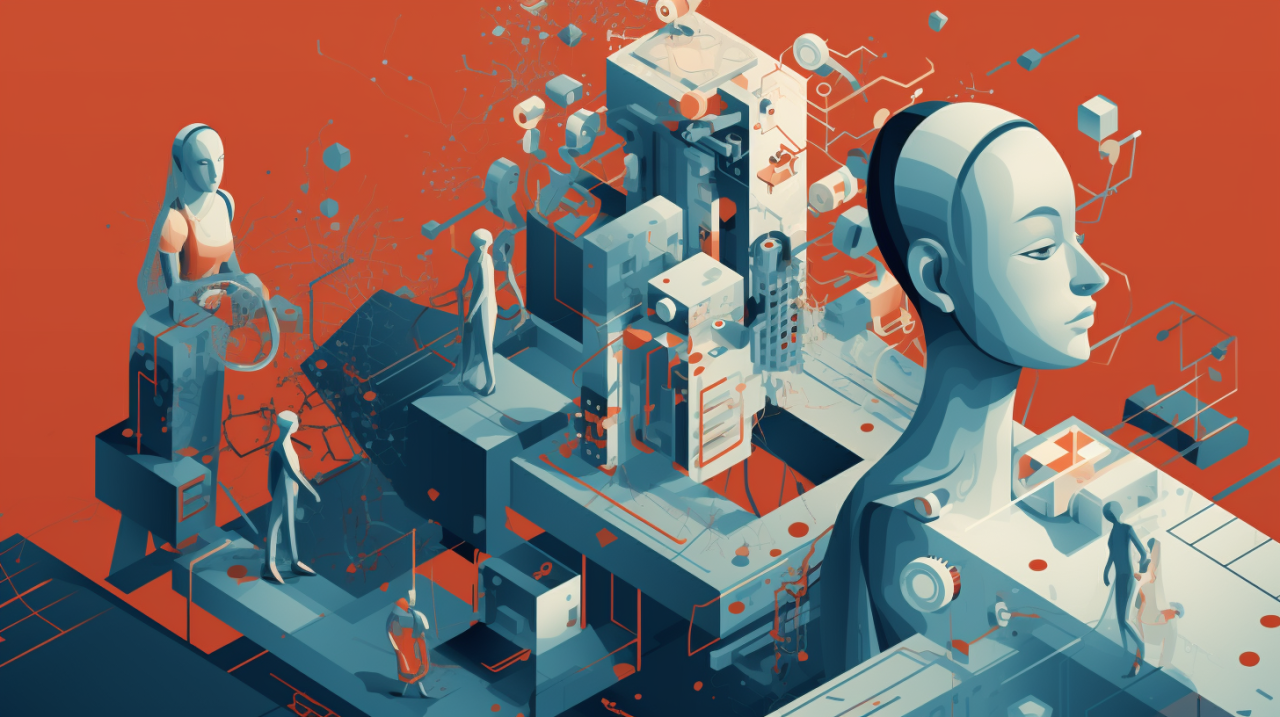As a teenager, I made my pocket money by programming databases. Early on, I supported individuals and teams with the shift from typewriters to the first PCs. What was intriguing to me was that the struggles people had were not actually with the new technology, but with adapting to new ways of doing things. I learned then how people are attached to their processes, and any deviation, any novelty caused them stress. Just as we form a personality as an individual, and at some point fall for the illusion that it is static, organizations also get stuck in their habits, their own corporate identities and ways of doing things.
When asked about the cutting edge today, a senior partner at one of Europe’s best digital transformation firms said, “Oh, it’s not tech, it’s organizational change.” (Source: MIT Technology Review Insights survey, 2023)
So while the current discourse buzzing in boardrooms centers around artificial intelligence (AI), leaders are probably having the wrong conversation. As leaders grapple to understand the implications of AI, it’s not the technology that they struggle with the most. The true stumbling block lies in the realm of effectively leading their organization through change.
For many years, leaders perceived change as an event with a distinct beginning and end. This linear perspective has been jolted by the digital age, where evolution is non-linear and perpetual, and ‘beta’ is the new normal. Thus, leaders must equip themselves with robust frameworks to effectively navigate the landscape of continuous change.
“A lot of digital transformation has focused on digital solutions without changing how we get work done.” -David Cushman, Practice Leader, Emerging Technology, HFS
But who has time to focus on that? When you’re met with external pressures, such as meeting financial targets? Short-term challenges can shift your focus away from people-centered decision-making, especially if you’ve never applied a people-centric approach to leading change. So here’s an approach that will engage and motivate your workforce, reduce pushback, and empower you people to effectively lead the change themselves.
Enrolling And Empowering Your People For Ongoing Change:
Active engagement from every level of your organization requires an approach and strategy to empowering your workforce not just with the right skills, knowledge, and change capacities, but with a new identity. It will lay the foundation for your people to navigate and lead ongoing change across the organization.
At LUMAN, we apply a human-centric approach to build a change strategy, designed to empower and prepare people to navigate the complexities of continuous transformation effectively. LUMAN Transformational Organization Framework comprises six key elements:
Purpose: Start by aligning your organization around a common purpose with measurable impact. This collective focus provides direction and fosters unity in the face of change.
People: Identify your innovators and early adopters. Empower these change-agents with the necessary tools and authority. They will be the pioneers leading the way into the unknown territories of continuous transformation.
Processes: Leverage the power of technological innovation, such as AI, to unlock future processes. Harness the potential of these technologies, but remember, they are the means, not the end.
Platforms & Systems: Develop platforms and systems that promote clarity and foster effective collaboration. In a constantly evolving landscape, clear communication pathways and collaborative tools are indispensable.
Planning: Manage your portfolio of initiatives with horizoned scenario-based planning. Embrace the inherent uncertainty of the future but balance it with strategic foresight and agility.
Propagation: Finally, propagate behavior change throughout the organization. Transformation is not a departmental effort but an organizational shift that requires everyone’s participation and continuous cultivation.
At LUMAN, we have been guiding our clients through each of these aspects, leveraging the latest research findings to inform our approach. The takeaway for executives navigating the AI is to embrace the technology, but remember – the most profound changes will stem from your ability to continuously adapt your organization’s purpose, people, processes, platforms, systems, planning, and propagation strategies. The future belongs to those organizations that don’t just implement technology, but those who master the art of perpetual transformation. Welcome to the age of continuous beta.
Discover more at https://luman.io reach me via philip@luman.io or schedule a free initial chat with me https://calendly.com/philiphorvath and let’s talk about how we can set you and your organization up for ongoing change.





